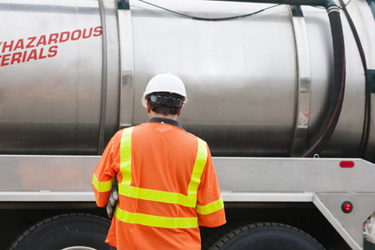PFAS As Hazardous Waste: Should Water And Wastewater Utilities Be Worried?
By Christian Bonawandt

After years of discussion, on Thursday, Feb. 1, the U.S. EPA announced a proposal that would classify nine per- and polyfluoroalkyl substances (PFAS) as hazardous waste under the Resource Conservation and Recovery Act (RCRA). The decision comes less than a year after EPA proposed individual maximum contaminant levels (MCLs) of 4 parts per trillion (ppt) for PFOA (perfluorooctanoic acid) and PFOS (perfluorooctane sulfonate) as well as a hazard index (HI) of 1.0 for a combination of them and four other substances.
The announcement has undoubtedly triggered concerns among water industry professionals about the impact it will have on their operations. Several states already regulate a range of PFAS, including New York, New Jersey, California, Wisconsin, and North Carolina. But the new rules, once finalized, will not only require removing all detectable traces of some PFAS, but are also poised to affect a number of aspects of water treatment plant (WTP) and even wastewater treatment plant (WWTP) operations.
What Does the Proposal Cover?
For now, the proposal aims to achieve two things. The first is to change the definition of hazardous waste in order to secure its authority over such matters. This is an important move, given the recent efforts by some groups to undermine EPA’s authority, most recently when it came to protected wetlands.
The second is to include the following nine PFAS as hazardous substances under RCRA:
- Perfluorooctanoic acid (PFOA)
- Perfluorooctanesulfonic acid (PFOS)
- Perfluorobutanesulfonic acid (PFBS)
- Hexafluoropropylene oxide-dimer acid (HFPO-DA or GenX)
- Perfluorononanoic acid (PFNA)
- Perfluorohexanesulfonic acid (PFHxS)
- Perfluorodecanoic acid (PFDA)
- Perfluorohexanoic acid (PFHxA)
- Perfluorobutanoic acid (PFBA)
At first glance, the proposed rules don’t relate to WTPs and WWTPs. After all, drinking water standards are regulated under the Safe Drinking Water Act (SDWA) and wastewater effluent permits are managed under the Clean Water Act (CWA). However, there are areas where RCRA can affect water and wastewater facilities.
Filter Media Disposal
Those WTPs that are already leveraging granular activated carbon (GAC), ion exchange (IX), or reverse osmosis (RO) technology to remove PFAS may find it more difficult to dispose of spent media and membranes. If the EPA moves ahead with its plan to classify some PFAS as hazardous waste under RCRA, regulations may prohibit landfilling contaminated media in some states or municipalities (or even nationwide). This is almost guaranteed to add operating costs. WTPs may be required to pay additional fees to municipal waste management departments or call private hazardous waste disposal services. In some cases, incineration may be the only viable option. But PFAS can only be destroyed at temperatures between 1,000- and 1,800 degrees C, which not all incinerators can achieve. And some incinerators cannot or will not accept PFAS-contaminated media. As a result, those that do may find themselves in high demand, which can increase prices.
This impact may not be limited to drinking water. Wastewater facilities that use tertiary treatment such as cloth media, as well as membrane filters, may need to adjust procedures for how spent media are handled.
Sludge Handling
While biological processes are not an effective way to remove PFAS from wastewater, it is inevitable that PFAS-laden wastewater will result in PFAS-contaminated sludge. Similar to how they affect disposal of filter media, the new rules could change how WWTPs handle their sludge if it is found to contain PFAS. For example, final regulations may prohibit landfilling. In addition, any sludge contaminated with PFAS may end up being ineligible for composting or beneficial reuse, which are often sources of income for many WWTPs. Like with filter media, incineration may be the only viable option, which would both impose new operating costs and also increase overall carbon footprint.
Remediation
RCRA rules focus on prevention rather than remediation, so unless the EPA also adds rules to Comprehensive Environmental Response, Compensation, and Liability Act (CERCLA), there is little change that WTPs and WWTPs will be required to clean up PFAS-contaminated water. Even if new rules include language for remediation, water and wastewater treatment plants may receive special dispensation. After all, if anything, the treatment operations are a key line of defense when it comes to protecting the public from PFAS.
Until the rules are finalized, it will be hard to know exactly how they will impact water and wastewater treatment facilities. Once the rules have been published in the National Register, EPA will enter two comment periods. During this time, it will be important for water authorities to speak up about in order to minimize the risks and burdens imposed on them.
Christian Bonawandt is an industrial content writer for Water Online. He has been writing about B2B technology and industrial processes for 23 years.
